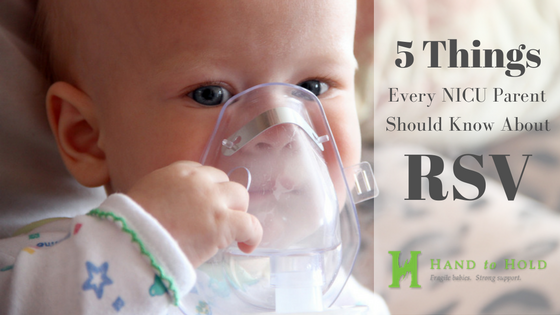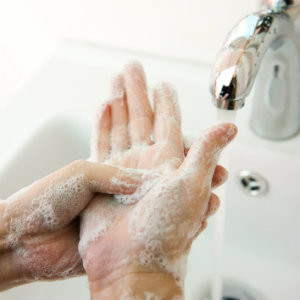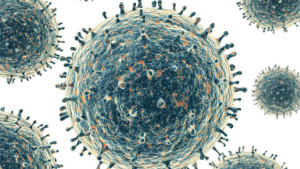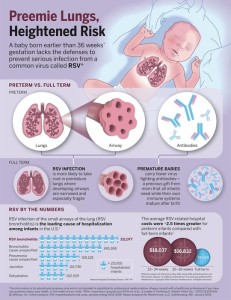This article was originally published on the Hand to Hold website.
RSV Update: This year the American Academy of Pediatrics changed their recommendations for use of Palivizumab against RSV in a policy statement entitled “Updated Guidance for Palivizumab Prophylaxis Among Infants and Young Children at Increased Risk of Hospitalization for Respiratory Syncytial Virus Infection” (See the July 28, 2014 press release). These new guidelines are controversial because they severely limit the number of infants who get Synagis® when they are adopted by insurers. If you believe your child will benefit from monthly Palivizumab injections you need to ACT NOW. Call your insurer to confirm your coverage. Then work with your baby’s medical providers to advocate for the care that is best for your baby and their unique medical history. If you need help navigating this issue see Hand to Hold’s 2015-2016 RSV Season Toolkit.
As an alternative, families can advocate that their prescriber utilize the National Perinatal Association 2015 Respiratory Syncytial Virus (RSV) Guideline published in the November 2014 issue of Neonatology Today.Authors: Mitchell Goldstein, MD; T. Allen Merritt, MD; Raylene Phillips, MD; Gilbert Martin, MD; Sue Hall, MD; Rami Yogev, MD; Alan Spitzer, MD

Cold and flu season is here, which means you’ve probably started to hear a lot of people coughing and sneezing. When you’re a NICU parent, these sounds can make you panic. We aren’t just worried catching a cold or the flu. We’re worried about RSV!
For most us the respiratory syncytial (sin-SISH-uhl) virus (RSV) looks like not much more than the common cold. But for some babies – including babies born preterm and babies with special health care needs – an RSV infection can lead to serious complications like pneumonia and bronchiolitis – and even respiratory failure.
Unfortunately, for high-risk families like ours it isn’t unusual for an RSV infection to result to a stay in the pediatric intensive care unit (PICU). In fact, RSV infection is the leading cause of hospitalization of infants younger than 1 year of age in the United States. While there is currently no RSV vaccine, there are things you can do to prevent RSV infection.
If you’re going to protect your baby from RSV here are
5 things you need to know…
1. Who is at greatest risk for complications from RSV?
Your child is at an increased risk for respiratory complications from RSV – or the flu- if they fall into these risk categories:
- Babies who are younger than 6 months at the start of RSV season
- Infants who are born preterm and <35 weeks gestation
- Infants and children younger than 2 years who have been treated for chronic lung disease within 6 months of the start of the RSV season
- Babies who have either congenital abnormalities of the airway or neuromuscular disease that affect lung development and function
- Babies with cyanotic or complicated congenital heart disease
- Anyone with a weakened immune system
Other risk factors include:
- Being less than 3 months old
- Having school-age siblings
- Being a multiple
- Having a low birthweight (<2500 g)
- Having a family history of asthma
- Living in crowded conditions
- Attending day care (defined as being cared for along with two or more unrelated children)
- Exposure to smoking, smokers, or their clothing and belongings
- Exposure to environmental air pollutants (e.g. dust, mold, fireplace smoke)
2. How is RSV Spread?
RSV is spread when an infected person coughs or sneezes, sending virus-containing droplets into the air. Other people get infected when they inhale these droplets or touch a contaminated surface then touch their mouth, nose, or eyes.
You can stop spreading viruses by:
- Washing your hands
- Changing your clothes and taking off your shoes when when you get home
- Touching your face and your children’s faces less often
- Kissing your children on the forehead if either of you is sick
- Cleaning household surfaces with soap & water or disinfectants
3. What does an RSV infection look like?
It can be hard to tell RSV from other colds and viral infections. Learn about the common signs of RSV infection and IF YOU HAVE ANY CONCERN AT ALL ABOUT YOUR CHILD’S BREATHING GET HELP. There’s no need to wait.If your child is wheezing or is having problems breathing go to the emergency room. RSV infection looks like:
- Coughing, wheezing, or gasping for breath
- Stuffy or runny nose
- Sore throat
- A bluish color around the mouth or fingernails (cyanosis from lack of oxygen)
- Caved in chest or flaring nostrils when breathing because your child is having to use their chest and face muscles to breathe
- Earache
- Fever
- Irritability or not sleeping well
- Not eating well
- Listlessness, sleepiness, or lethargy
- Episodes of apnea, where breathing stops for about 15 to 20 seconds
4. How is RSV treated?
In most cases, RSV infections will go away on their own in about 10 to 14 days. As with most viral infections the best thing to do is manage the symptoms until the virus runs its course. But if the infection moves from the upper-respiratory tract (high in the throat and chest) to a lower-respiratory infection (the bronchioles and airsacs of the lungs) your child may be hospitalized.
Severe RSV infection is treated with:
- Antiviral drugs to slow the virus from reproducing and multiplying
- Bronchodilators to relax the muscles around the airways
- Supplemental oxygen to bring up blood oxygen levels
- Suctioning to remove mucus
- IV fluids to treat dehydration
- Corticosteroids to treat airway inflammation (although this needs to be studied more)
- Antibiotics to treat any bacterial infection, like pneumonia, that might have developed in the lungs
- In severe cases, a breathing tube and support from a ventilator
5. When is RSV Season?

©iStockphoto.com/hxdbzxy
It can be difficult to predict how long RSV season will last. It depends on where you live and how many people are infected. In the United States RSV outbreaks usually begin in November or December, peak in January or February, and end by March or April. You can find out when RSV season is where you live by visiting the RSV Protection site (created by MedImmune) or the Centers for Disease Control’s RSV Surveillance website.
During RSV season you will want to:
- Wash your hands frequently! And ask other people to do the same
- Stay away from crowds, young children (other than your own), and anyone who might be sick
- Cover your coughs or sneezes
- Don’t let anyone smoke in your home or near your child
- Wash your baby’s toys, clothes, and bedding often
5 Ways to Prevent Respiratory Infections
- Wash Your Hands
- Get Vaccinated
- Stay Away from Sick People
- Create a Germ-Free Home
- Find Out If Your Child Qualifies for Synagis® antibody injections
MORE INFORMATION
5 Resources You Need to Know About
5 People Who Can Help
It’s important to get the facts about RSV and the flu, but it’s also important to get help. You are not alone. These are some of the people who can help:
- Your Child’s Pediatrician – Talk to your pediatrician. They can help you understand if your baby is vulnerable to complications from flu and RSV and prescribe Synagis® if your baby qualifies as being at high-risk. Make sure your child receives all their vaccinations on schedule and according to their chronological age, versus adjusted age
- A Pulmonologist – Can help treat your baby for breathing problems, chronic lung disease, and other respiratory conditions
- Your Family and Friends – We need to build a circle of immunity around our families. If every healthy adult and child got vaccinated for flu, pertussis (whooping cough), and other infectious diseases these diseases couldn’t spread as quickly and infect the most vulnerable members of our families and communities
- Case Managers – Case Managers can be found at insurance companies, pediatric practices, and through state-funded programs like Medicaid and Children with Special Health Care Needs programs. Case managers help coordinate your child’s care, find specialists, and get approval for therapies, services, and prescription coverage. They can also help if you need to appeal a denial of coverage.
- Other NICU Parents – Sometimes you just want to talk to another family who’s walked in your shoes. Peer support can help you navigate hard decisions and make informed choices. If you need support contact Hand to Hold and get connected with families like yours.
Sources
- American Academy of Pediatrics (AAP) Guidelines for Infants and Children at Risk for Severe Illness Due to RSV Infection – accessible through the Center for Disease Control.
- American Academy of Pediatrics (AAP) Updated Guidance for Palivizumab Prophylaxis Among Infants and Young Children at Increased Risk of Hospitalization for Respiratory Syncytial Virus Infection, 2014
- American Academy of Pediatrics (AAP) – Redbook Online: Report of the Committee on Infectious Diseases – Section 3. Summaries of Infectious Diseases – Respiratory Syncytial Virus
- American Academy of Pediatrics (AAP) – Redbook Online: Report of the Committee on Infectious Diseases – Section 1. Active and Passive Immunization – Immunization in Special Circumstances – Preterm and Low Birth Weight Infants
- American Lung Association – Respiratory Syncytial Virus
- Centers for Disease Control – Respiratory Syncytial Virus
- Centers for Disease Control – RSV Surveillance Data
- Centers for Disease Control – Seasonal Influenza (Flu)
- Centers for Disease Control – Vaccines & Immunization
- MedImmune – RSV Protection This website which is sponsored by the maker of Synagis®, which provides information about RSV specifically if you have had a premature baby.
- MedImmune – Synagis. This website describes how Synagis® works, RSV, insurance coverage tips and resources.
- National Institute of Allergy and Infectious Diseases – Respiratory Syncytial Virus – This Institute is researching new medicines to help prevent and treat RSV. They worked with MedImmune to develop Synagis®.


